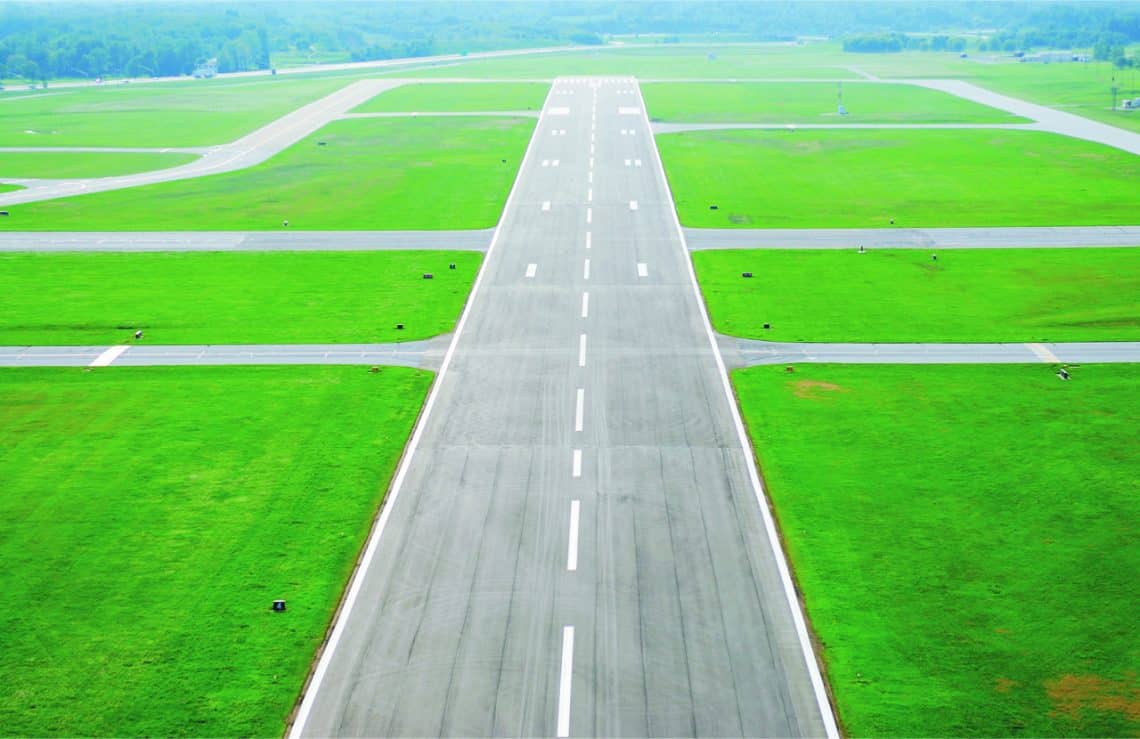With new grass seed products aimed at repelling wildlife, DLF’s ClearSky project seeks to reduce airplane bird strikes.
Bird strikes during take-off and landing are well known for the safety risk they pose and the resulting costs incurred. According to Federal Aviation Administration, more than 262 people have been killed and 250 aircraft destroyed worldwide as a result of wildlife strikes since 1988.
In 2015, U.S. civil aircraft reported about 13,700 bird and other wildlife strikes. In 2016, the U.S. Air Force reported an additional 4,500 bird strikes.
From 1990-2015, U.S. airlines reported 53 incidents in which pilots had to jettison fuel to lighten their load during a precautionary or emergency landing after striking birds on take-off or climb. In each of these dumps, an average of 14,300 gallons of jet fuel was released. Waterfowl, gulls, raptors and pigeons/doves represented 80 percent of the reported bird strikes causing damage to U.S. civil aircraft during this time.
Birds are drawn to runways because of the grassy landscape that grows around them, attracting insects the birds use as a food source. Some birds also nest in grass and feed on the grass itself.
As a result, airport managers are looking for a means to reduce the risk of bird strikes by planting grass that attracts fewer insects and fewer birds. Airports in Great Britain, the Netherlands, Denmark and other countries are testing special airport grass solutions on airfields with the purpose of making takeoffs and landings safer, notes Frank Hansen, product specialist for DLF in Europe.
“DLF companies have been selling mixtures to airfields for a very long time, so it was a natural step to begin selecting for this purpose,” he says.
Piloting New Seed Mixtures
DLF’s new ClearSky pilot project involves using specially-crafted tall fescue grass seed combined with a maintenance program ensuring optimal growth and creating an erect, spiky-by-nature habitat that’s too dense for small birds to tackle and too spiky for larger birds to find navigable.
New Zealand’s Wanaka Airport is one of the airports taking part in the ClearSky trial. The Wanaka trial is one of DLF’s preferred test sites due to the cold temperature. Operations manager Ralph Fegan met with DLF turf manager Peter Griffiths earlier this year to check on the progress of the three-year trial.
“Wanaka has a unique microclimate, and there’s no one-size-fits-all solution,” Griffiths says. “It’s holding up really well to the frosts and is looking good.”
The tall fescue contains special endophytes, naturally occurring fungi that live inside plants, that decrease the attractiveness of the grasses for feeding insects, and therefore insect-eating birds and animals. The resulting grass can also be unattractive to the human eye, meaning the breeders working on the ClearSky project have had to change their mindset.
“This isn’t turf or lawn grass,” Hansen says. “The breeder’s eyes shouldn’t focus on visual merit, and there is no goal of increasing yield or quality as in forage breeding.”
ClearSky project participants have also had to change their attitudes when it comes to the grass, as maintenance and appearance are far from what is common in the realm of forage or turf. For periods of the year the visual aspect is “less than beautiful,” as Hansen calls it, with discoloration and uneven appearance.
“We focused a lot on the morphology of the turf types and selected plants with stiffer leaves and shoots, and with a high number of persistent stems,” Hansen says. “Tall fescue is also not the fastest-growing grass.
“To ensure fast cover, we have tested a number of ‘nurse species’ options. These species will decline with time as the tall fescue takes over.”
Perennial ryegrass turf types are excellent nurse plants, and annual ryegrass varieties can, in some situations, replace the perennial ryegrasses. For both of these nurse species, DLF has taken some unique approaches, employing tetraploid perennial ryegrass turf-type varieties from within its 4turf product range, producing strong plants that compete less with the tall fescue. It has also used diploid turf types of annual ryegrass.
For extreme conditions, DLF has a unique alternative with the denser tall fescue type of Festulolium: the variety Fojtan. Fojtan produces less dry matter than a normal forage tall fescue and is very dense and highly persistent.













